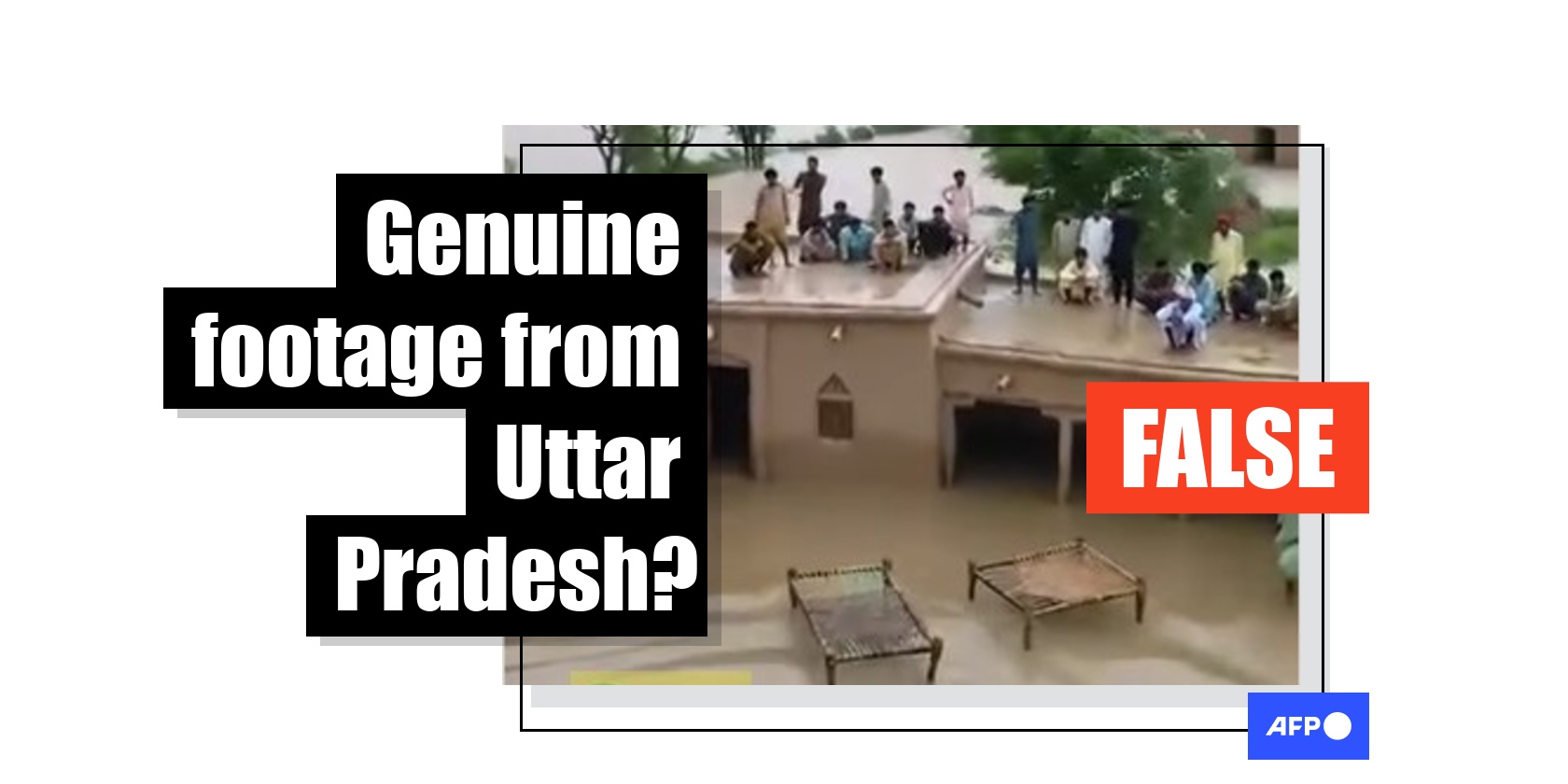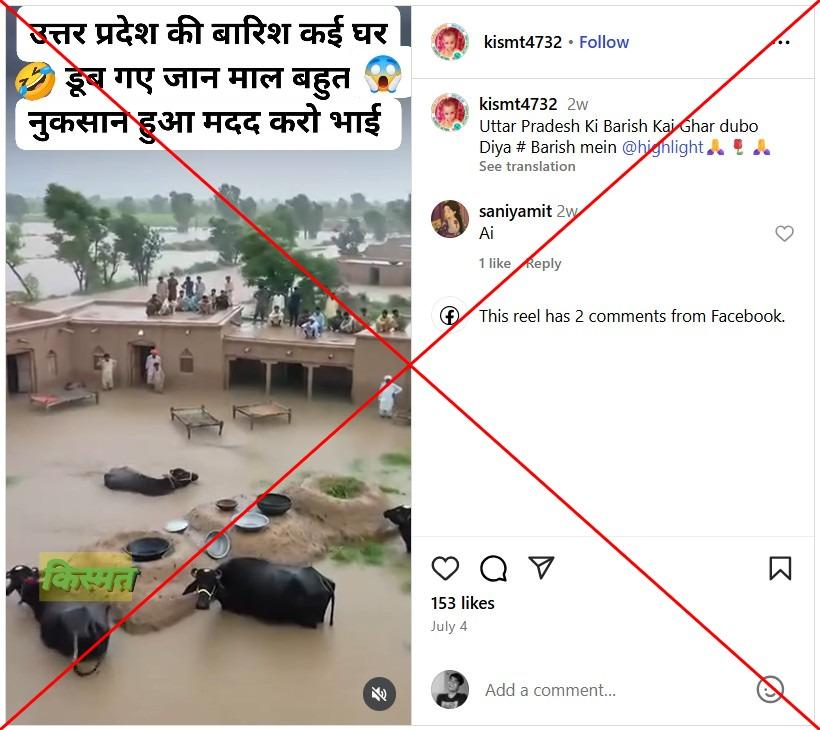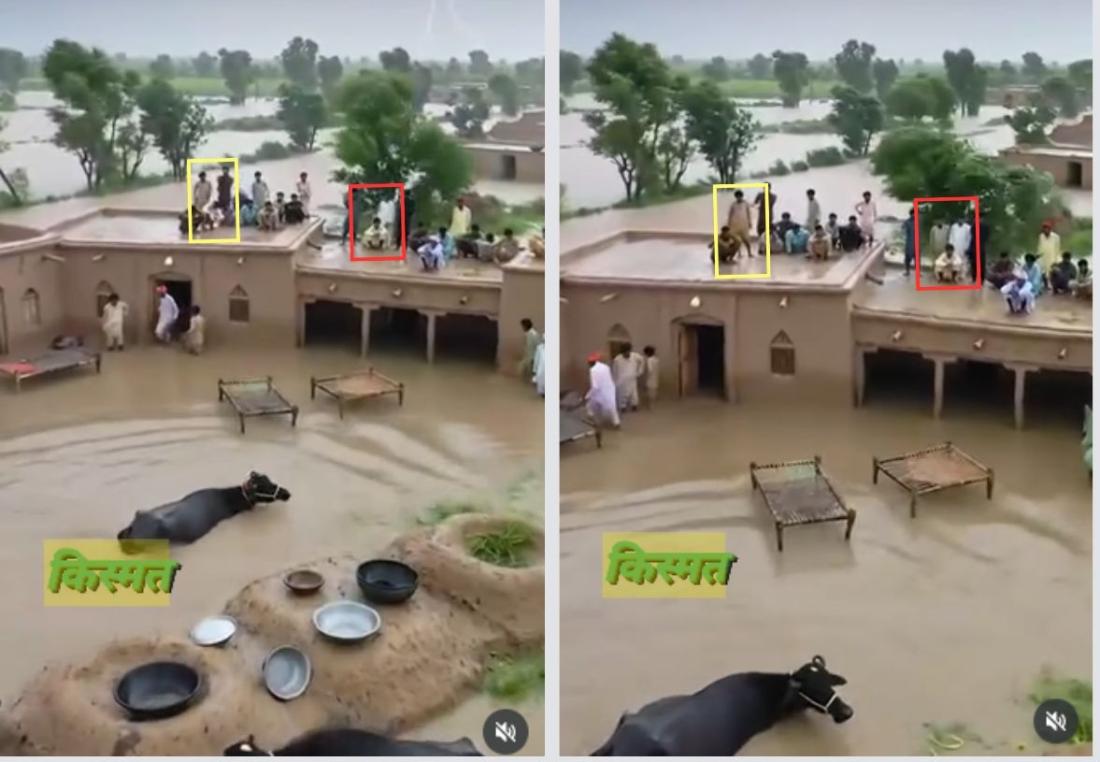
Social media users fall for AI-generated clip of flooding in northern India
- Published on August 6, 2025 at 08:49
- 2 min read
- By Sachin BAGHEL, AFP India
"Rain in Uttar Pradesh submerged many houses," reads the Instagram post published on July 4, 2025.
It also shares a clip that appears to show a group of people on the roof of a building and buffaloes walking in floodwater, with Hindi-language text on the clip largely repeating the false claim.

The posts surfaced as torrential rain hit Himachal Pradesh and Uttarakhand -- two states that neighbour Uttar Pradesh -- in June and July, killing at least 69 people (archived link).
Floods later affected Uttar Pradesh in August, displacing more than 11,000 people and damaging over 300 homes (archived link).
India's annual monsoon season from June to September offers respite from the intense summer heat and is crucial for replenishing water supplies, but also brings widespread death and destruction.
The false clip also spread on Facebook and X, and some users appear to believe the clip was filmed in Uttar Pradesh.
One user wrote, "No one can escape the fierce form of nature."
"Nature is angry," another commented.
But there are no official reports of flooding in Uttar Pradesh in early July and the video is AI-generated.
A reverse image search led to more false posts, but Google's "About this image" feature identified the video as having been made with AI.
The ability to detect AI-generated images is based on Google's SynthID technology, which was launched by its DeepMind AI lab in 2023.

Several clear visual inconsistencies can also be seen in the clip -- telltale signs that it was made with AI.
A person in white clothes sitting on the roof at the beginning of the video disappears later, while another man not visible at the beginning appears later in the video.
Wooden "charpoy" beds also appear to be at the same height as buffaloes, when in reality they would be lower.

A reverse image search has also revealed the video was originally uploaded on July 3 to a TikTok account, which publishes other clips with similar visual inconsistencies (archived link).
AFP has debunked other false claims sharing fabricated content created with AI here.

Copyright © AFP 2017-2025. Any commercial use of this content requires a subscription. Click here to find out more.
Is there content that you would like AFP to fact-check? Get in touch.
Contact us




